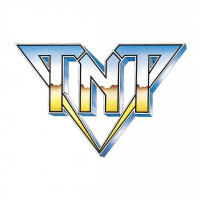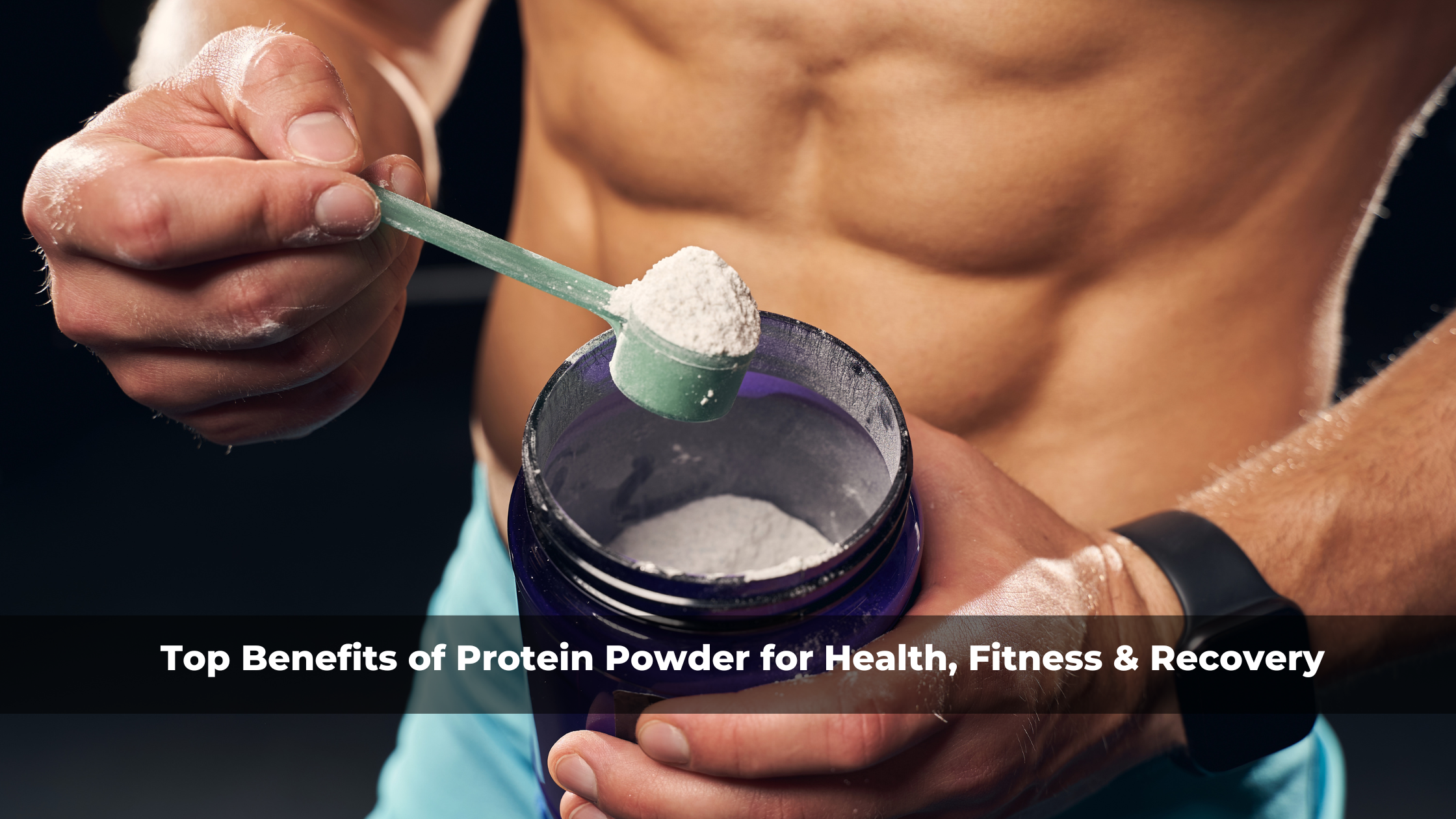The Whey Protein Paradox in India: Exploring Growth and Hesitation

Strong 8k brings an ultra-HD IPTV experience to your living room and your pocket.
India is in the midst of a health revolution. From bustling metropolitan gyms to the rise of home workouts, fitness awareness in India has never been higher. Yet, a curious paradox exists. While millions are embracing a more active lifestyle, a key component of fitness nutrition—whey protein—remains on the sidelines for the vast majority.
✍️ For anyone balancing work, family, and health goals, our guide on whey protein shows how quick shakes and recipes can provide nutrition without compromising time, taste, or results.
The numbers are telling. Industry reports estimate that despite a population of over 1.4 billion, only around 3 million (30 lakh) people in India use whey protein regularly. This figure is staggeringly low, especially when contrasted with the burgeoning gym culture in India and the scientifically established protein deficiency prevalent across the nation.
So, why the disconnect? Why is a country actively seeking better health so hesitant to adopt one of the most researched and effective protein supplements available? The answer is not simple. It is a complex tapestry woven from threads of deep-rooted cultural beliefs, significant economic realities, and a pervasive gap in credible education. This article unpacks the layers of this paradox to understand the state of whey protein in India and its future potential.
The Lay of the Land: Fitness Boom vs. Protein Gap
To comprehend the whey protein dilemma, we must first look at two conflicting trends in India: the explosive growth of the fitness industry and the persistent problem of inadequate protein intake.
The Rise of Gym Culture and Fitness Consciousness
The Indian fitness industry is on a formidable growth trajectory. According to Statista, the Health & Fitness Club market in India is projected to reach a revenue of US$1.50 billion in 2024, with an expected annual growth rate of 7.02%. This translates to more gyms, more fitness apps, more marathons, and a populace that is increasingly proactive about its physical well-being.
This cultural shift is visible everywhere:
Urban Proliferation: Tier-1 and Tier-2 cities are dotted with modern fitness centers, CrossFit boxes, and yoga studios.
Digital Fitness: The pandemic accelerated the adoption of online fitness classes and health-tracking apps.
Active Lifestyles: Running, cycling, and amateur sports are gaining immense popularity beyond just professional athletes.
This boom creates a direct and pressing need for optimal nutrition, particularly for muscle repair and growth, where protein is the undisputed king. Logically, the Indian whey protein market should be booming in tandem. But it isn't.
The National Protein Deficiency
The irony is that this fitness-conscious population is largely protein-deficient. A 2017 survey across seven Indian cities highlighted that 73% of urban rich Indians have a protein-deficient diet. The numbers are even more stark in other demographics.
The Indian Council of Medical Research (ICMR) and the National Institute of Nutrition (NIN) recommend a daily protein requirement in India of approximately 0.8 to 1.0 grams of protein per kilogram of body weight for a sedentary adult. For active individuals and those looking to build muscle, this requirement can climb to grams per kilogram, and even higher for serious athletes.
For a 70 kg individual, this means:
Sedentary: grams of protein per day.
Active: grams of protein per day.
For many Indians, especially vegetarians, meeting even the baseline requirement through diet alone is a daily challenge. Hitting the higher numbers needed for athletic recovery is nearly impossible without meticulous planning or supplementation. This gap between requirement and consumption is where whey protein should logically fit, yet powerful barriers stand in the way.
Cultural Hurdles: The "Dabba vs. Dibba" Mentality
The primary resistance to protein supplements in India is not scientific but deeply cultural. For generations, nutrition has been synonymous with whole, natural foods from the kitchen, not a powder from a plastic tub.
The "Natural" Food Philosophy
The Indian food philosophy champions ghar ka khana (home-cooked food). Protein sources like dal (lentils), paneer (cottage cheese), doodh (milk), dahi (yogurt), and chickpeas are seen as pure, safe, and sufficient. In this context, whey protein, which is derived from milk during the cheese-making process, is often incorrectly perceived as:
"Artificial" or "Chemical": The processing it undergoes to be converted into a powder form leads to suspicion. The perception is that it's a lab-created substance rather than a filtered food byproduct.
"Unnecessary": There is a strong belief that a "balanced diet" of traditional foods is all anyone ever needs, regardless of their activity level. The idea of supplementing this diet is often met with skepticism.
The Pervasive Steroid Misconception
This is perhaps the single most damaging myth plaguing the Indian whey protein market. A significant portion of the population, especially parents and the older generation, incorrectly conflates whey protein with anabolic steroids.
Source of the Myth: This likely stems from hearing about bodybuilders using a cocktail of substances, with "protein powder" and "steroids" being mentioned in the same breath. The lack of clear distinction in public discourse has led to a dangerous association.
The Reality: Whey protein is a food product. It is a high-quality, complete protein containing all nine essential amino acids, crucial for muscle protein synthesis. Anabolic steroids, on the other hand, are synthetic hormones that have profound and often dangerous effects on the body's endocrine system. They are fundamentally different in origin, mechanism, and legal status.
Generational Distrust and Parental Veto
The decision to start using a supplement in an Indian household is rarely an individual one. A young adult starting their fitness journey might be convinced of the benefits of whey protein, but they often face a wall of resistance from their parents. Concerns are typically voiced as:
"Is it safe? Will it harm your kidneys?"
"Stop taking this 'powder'; it will make you weak later in life."
"Just eat more paneer and drink milk. Our ancestors built their bodies on that."
This parental veto, born out of genuine concern but fueled by misinformation, is a powerful deterrent that significantly curtails market growth.
The Economic Equation: A Question of Price and Priority
Even if cultural barriers are crossed, the economic reality of whey protein presents another formidable hurdle for the average Indian consumer.
High Upfront Cost and Perceived Value
A standard 2 kg (4.4 lbs) tub of reputable whey protein can cost anywhere between ₹4,000 and ₹7,000. For a middle-class family, this is a substantial one-time expenditure, often viewed as a luxury rather than a necessity.
Let's break down the cost per serving:
A 2 kg tub contains roughly 60 servings.
At a price of ₹5,000, the cost per serving is approximately ₹83.
Each serving provides about 24-25 grams of high-quality protein.
When compared to other protein sources, the economics can be surprising:
Eggs: To get 25g of protein, you need about 4 large eggs. At ₹7 per egg, this costs ₹28.
Chicken Breast: To get 25g of protein, you need about 100-110g of chicken breast. This can cost ₹40-₹60 depending on the location.
Paneer: To get 25g of protein, you need about 125g of paneer. This can cost ₹50-₹70.
While whey protein is not the cheapest option per gram, its cost is competitive, especially considering its convenience and high biological value. However, the psychological barrier of the large initial investment is significant. Paying ₹28 for eggs daily feels more manageable than a ₹5,000 purchase, even if the long-term cost is comparable.
Price Sensitivity in Tier-2 and Tier-3 Markets
The real growth in fitness awareness in India is happening beyond the metros, in Tier-2 and Tier-3 cities. However, these markets are extremely price-sensitive. A monthly supplement expense that rivals a utility bill or school fees is simply not feasible for a large segment of this new fitness-conscious audience. This economic constraint automatically excludes a massive potential customer base.
The Shadow of Counterfeits
The high price of genuine products has given rise to a dangerous counterfeit market. Stories of consumers receiving tubs filled with chalk powder, soy flour, or other adulterants are rampant. This creates a vicious cycle:
Consumers are afraid of being duped and wasting a large sum of money.
This fear erodes trust not just in sellers, but in the product category itself.
Many potential buyers choose not to purchase at all, deeming the risk too high.
The lack of strong regulatory oversight and consumer-friendly verification methods exacerbates this problem, further depressing the formal Indian whey protein market.
The Knowledge Gap: Misinformation as a Market Barrier
The final piece of the puzzle is the profound lack of accessible, credible, and simple information about protein supplements in India.
Confusing Jargon and Marketing Overload
Walk into any supplement store or browse online, and you are bombarded with terms: Concentrate, Isolate, Hydrolysate, BCAA, EAA, Mass Gainer. For a beginner, this is overwhelming.
Whey Protein Concentrate (WPC): Contains about 70-80% protein, with some lactose and fat. It's the most common and affordable.
Whey Protein Isolate (WPI): Further processed to remove most lactose and fat, containing 90%+ protein. It's more expensive and suitable for those with lactose intolerance.
Whey Protein Hydrolysate (WPH): Pre-digested for the fastest absorption. It's the most expensive and typically used by elite athletes.
This complexity creates analysis paralysis. Unsure of what to choose, many potential users simply give up.
The "Gym Guru" and Bro-Science
In the absence of formal education, most fitness enthusiasts turn to the most "experienced" person in their gym or their friend circle for advice. While often well-intentioned, this advice is frequently based on anecdotal evidence ("bro-science") rather than actual science. This is how myths about kidney damage, the necessity of taking it immediately post-workout (the "anabolic window" myth), and brand-specific claims are propagated.
Lack of Authoritative, Localized Education
There is a clear need for educational content from authoritative bodies like the ICMR, NIN, or FSSAI, presented in simple terms and local languages. Scientific literature is often inaccessible, and brand-sponsored content is viewed with suspicion. This vacuum allows myths and misinformation to flourish, defining the narrative around whey protein in India.
Busting the Most Common Myths About Whey Protein
Education is the most powerful tool to overcome these barriers. Let's debunk some of the most persistent myths with facts.
-
Myth 1: Whey protein damages the kidneys and liver.
Fact: This is false for healthy individuals. Numerous long-term studies have shown that high protein intake (well above the RDA) does not harm kidney or liver function in people without pre-existing disease. The body simply excretes the excess nitrogen via urine. The myth arises from the fact that people with pre-existing kidney conditions are advised to monitor their protein intake, which is true for all protein sources, not just whey.
-
Myth 2: Whey protein is a steroid.
Fact: As explained earlier, this is fundamentally incorrect. Whey is a natural byproduct of milk. It is a food, not a synthetic hormone. Reputable brands of whey protein are tested for banned substances.
-
Myth 3: Whey protein is only for bodybuilders.
Fact: This is a narrow view. While bodybuilders have high protein needs, whey is beneficial for anyone looking to improve their health. This includes weekend warriors needing better recovery, individuals on a weight loss journey trying to preserve muscle, vegetarians struggling to meet protein goals, and even the elderly trying to combat age-related muscle loss (sarcopenia).
-
Myth 4: Whey protein causes unnatural weight gain.
Fact: No single food or supplement causes weight gain. A consistent calorie surplus (eating more calories than you burn) causes weight gain. Whey protein is relatively low in calories per serving. In fact, due to its high satiety effect (making you feel full), it can be a powerful tool for weight management by reducing overall calorie intake.
-
Myth 5: If you stop taking whey protein, your muscles will turn to fat.
Fact: This is biologically impossible. Muscle and fat are two completely different types of tissue. If you stop taking whey protein and stop training, your muscles will atrophy (get smaller) due to lack of stimulus. If you also start eating in a calorie surplus, you will gain fat. The two events are correlated with lifestyle changes, not caused by stopping the supplement.
The Untapped Potential: How Whey Can Help the Average Indian
Beyond the gym, whey protein has practical applications that align perfectly with the health goals of the average Indian.
Bridging the Vegetarian Protein Gap: India has a massive vegetarian population. While a vegetarian diet can be healthy, it is often challenging to get enough high-quality, complete protein. Plant-based sources like dals and legumes are often incomplete (lacking one or more essential amino acids) and need to be combined correctly. Whey protein is a complete protein with a high Biological Value (BV), meaning it is efficiently absorbed and utilized by the body, making it an excellent supplement for vegetarians.
Enhancing Recovery and Reducing Soreness: For the growing number of people engaging in recreational fitness—running, cycling, Zumba, or sports—muscle soreness can be a deterrent. Whey protein provides the necessary amino acids to repair muscle tissue faster, leading to better recovery and consistent performance.
Aiding in Weight Management: As mentioned, protein is the most satiating macronutrient. Incorporating a whey protein shake can help control hunger, reduce snacking on unhealthy foods, and maintain lean muscle mass during a calorie deficit, which is crucial for a healthy metabolism.
Supporting Healthy Aging: As people age, they naturally lose muscle mass in a process called sarcopenia. This leads to frailty and a lower quality of life. The elderly have higher protein requirements to combat this. A simple, easy-to-digest whey protein shake can be an effective way to meet these needs and maintain strength and mobility.
The Future of the Indian Whey Protein Market
The path forward for the Indian whey protein market is challenging but full of potential. Growth will be contingent on a multi-pronged approach:
Education: Brands, health authorities, and fitness professionals must collaborate to create and disseminate accurate, simple, and multilingual educational content to bust myths and build trust.
Regulation and Authenticity: Stricter enforcement by the FSSAI against counterfeit products and the adoption of verifiable authenticity features (like QR codes) are crucial to building consumer confidence.
Localization and Affordability: The "Make in India" initiative can play a role in reducing costs. Developing smaller, more affordable SKUs (stock-keeping units) or sachet-based products could lower the entry barrier for new consumers.
Shifting the Narrative: The focus must shift from "bodybuilding" to "holistic health." Marketing should highlight the benefits for general wellness, weight management, vegetarian nutrition, and active aging.
Conclusion: From Paradox to Potential
The story of whey protein in India is a classic case of a modern solution meeting traditional resistance. The low adoption rate is not due to a lack of need but a surplus of doubt—doubt rooted in culture, amplified by economics, and sustained by a lack of knowledge.
The 30 lakh regular users represent only the tip of the iceberg. Beneath the surface lies a vast population of fitness enthusiasts, health-conscious individuals, and vegetarians who stand to benefit immensely. Unlocking this potential requires more than just marketing; it requires a concerted effort to educate, build trust, and make quality protein accessible. As the lines between the dabba and the dibba begin to blur through understanding and acceptance, the great Indian protein paradox may finally resolve into a story of unprecedented growth and better national health.
Frequently Asked Questions (FAQ)
1. Is whey protein safe for daily consumption in India? Yes, for healthy individuals, whey protein is safe for daily consumption. It is a milk byproduct and is considered a food supplement by the FSSAI. It's important to consume it as part of a balanced diet and not exceed your personal daily protein requirement. People with pre-existing kidney or liver conditions should consult a doctor before starting any supplement.
2. How much protein do I need per day in India? The daily protein requirement in India, as per the ICMR, is about 0.8-1.0 grams per kg of body weight for a sedentary person. If you are active, into fitness, or trying to build muscle, this can increase to 1.2-1.7 grams per kg. It's best to calculate your needs based on your body weight and activity level.
3. Can vegetarians in India benefit from whey protein? Absolutely. Whey protein is one of the most beneficial supplements for vegetarians. It is a complete protein source, providing all essential amino acids that can be difficult to obtain in sufficient quantities from plant-based diets alone. It is classified as lacto-vegetarian.
4. What is the difference between whey protein and regular milk powder? While both come from milk, they are very different. Milk powder is essentially dehydrated milk, containing a mix of protein (casein and whey), carbohydrates (lactose), and fats. Whey protein is specifically filtered to isolate the whey component, resulting in a much higher protein concentration (70-95%) and significantly lower levels of carbs and fats.
5. Why is whey protein so expensive in India? Several factors contribute to its cost. The complex filtration process (micro/ultra-filtration) requires sophisticated technology. Many products are imported, incurring customs duties and taxes. Even for products made in India, the raw whey is often imported. Marketing, branding, and the costs associated with fighting counterfeits also add to the final price.
References
Statista. (2024). Health & Fitness Clubs - India.
National Institute of Nutrition (NIN), Hyderabad. Nutrient Requirements for Indians.
Business Insider India. (2019). More than 70% of Indians are protein deficient in their diets.
Boirie, Y., et al. (1997). Slow and fast dietary proteins differently modulate postprandial protein accretion. Proceedings of the National Academy of Sciences (PNAS).
Antonio, J., et al. (2014). The effects of a high protein diet on indices of health and body composition - a crossover trial in resistance-trained men. Journal of the International Society of Sports Nutrition.
Note: IndiBlogHub features both user-submitted and editorial content. We do not verify third-party contributions. Read our Disclaimer and Privacy Policyfor details.







